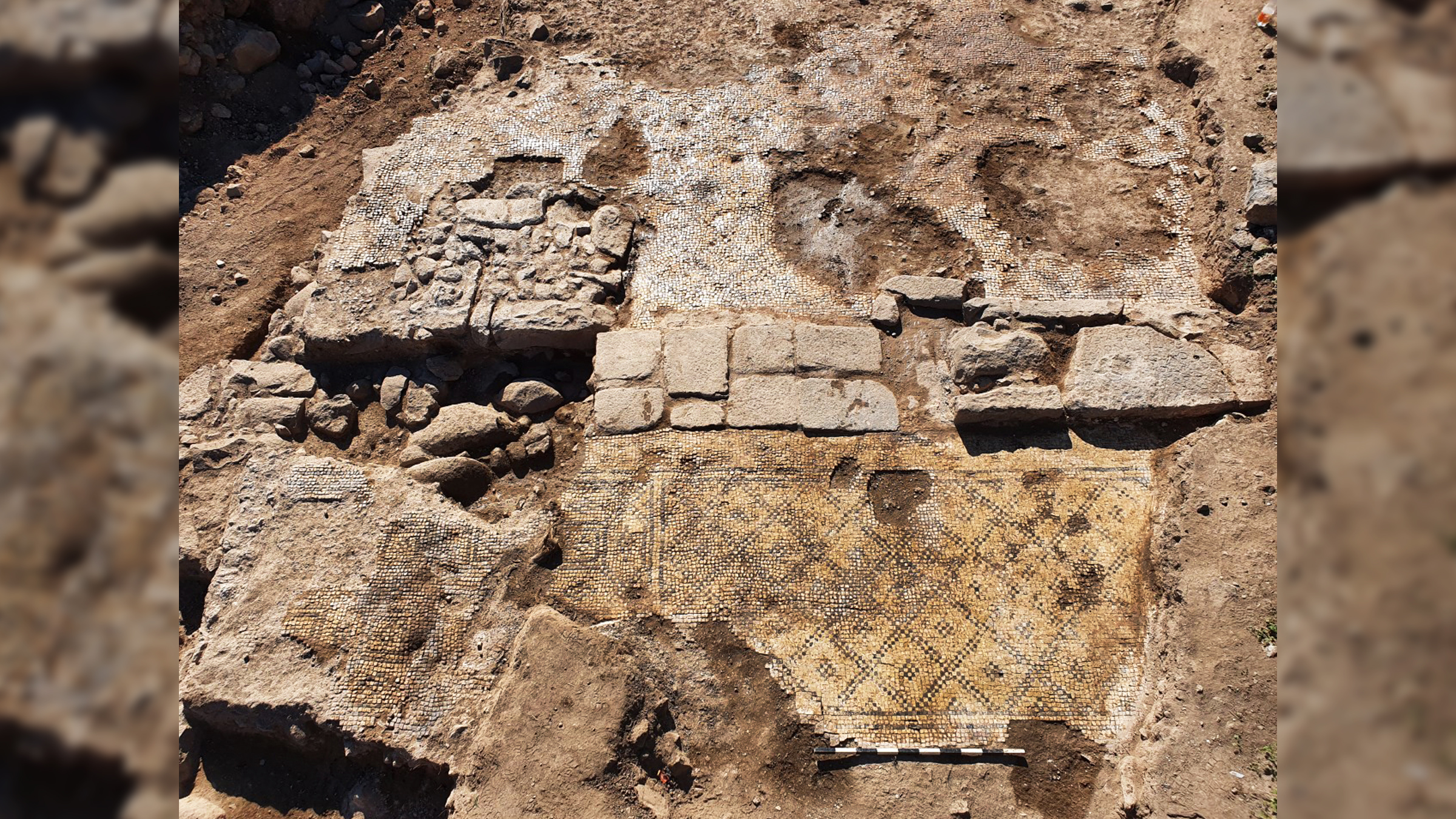1,500-year-old 'Christ, born of Mary' inscription discovered in Israel
The inscription was written in Greek.

Archaeologists have unearthed a 1,500-year-old inscribed Christian blessing that begins, "Christ, born of Mary," the Israel Antiquities Authority (IAA) reported Wednesday (Jan. 20).
The stone inscription, written in Greek, was once part of a lintel (the structure that spans the top of door frames) that decorated the entrance of a church, located in what is now et-Taiyiba (also called Taiba), a village in Israel's northern Jezreel Valley.
The church itself dates to the late fifth century A.D., meaning it may have been built during the Byzantine Empire. In addition to the lintel, archaeologists found that the previously unknown church contained mosaic pavements arranged in a geometric design.
Related: Photos: Biblical-era cistern and carvings discovered in Israel
The inscription was likely created for the church's opening dedication, according to Leah Di-Segni, a researcher at the Institute of Archaeology of the Hebrew University of Jerusalem, who translated the text. In full, the inscription reads, "Christ born of Mary. This work of the most God-fearing and pious bishop [Theodo]sius and the miserable Th[omas] was built from the foundation - -. Whoever enters should pray for them."
The opening line, "Christ born of Mary," was likely intended to protect the reader of the inscription from evil forces — it's a common phrase used in inscriptions and documents from that time, Di-Segni said.
"The inscription greets those who enter and blesses them," Di-Segni said in a statement from the IAA. "It is therefore clear that the building is a church, and not a monastery: Churches greeted believers at their entrance, while monasteries tended not to do this."
Sign up for the Live Science daily newsletter now
Get the world’s most fascinating discoveries delivered straight to your inbox.

Theodosius, one of the men referenced in the inscription, was one of the first Christian bishops and the building's founder. Theodosius was a regional archbishop, meaning he had religious authority over the larger metropolis of Bet She'an, which included what is now et-Taiyiba.
"This is the first evidence of the Byzantine church's existence in the village of et-Taiyiba, and it adds to other finds attesting to the activities of Christians who lived in the region," Walid Atrash, an archaeologist at the IAA, said in the statement. Previously, archaeologists found the remains of a church from the Crusader period, as well as a monastery that was under the jurisdiction of Bet She'an religious metropolis.
Like many other ancient stone blocks — for instance, an 1,800-year-old altar to the pagan god Pan that was repurposed as a brick in a Byzantine church in Israel — the lintel was reused at a later date, possibly in the late Byzantine or early Islamic period. "It was now found incorporated in the walls, therefore we know that the stone was reused as construction material. Likely the building collapsed and was rebuilt," Yardenna Alexandre, an archaeologist with the IAA, told The Jerusalem Post.
During the Byzantine period (fifth to seven centuries), this place was a Christian village, and it transformed into a Christian fortress during Crusader times. "The modern Arab village grew around it, and some remains are still visible," Alexandre said.
Archaeologists found the church ahead of a road construction project. Tzachi Lang and Kojan Haku, archaeologists at the Israel Antiquities Authority, directed the excavation, and received help from the public, including students, volunteers and local workers, the IAA reported.
Editor's Note: This article was updated at 6:11 p.m. EST on Jan. 22 to clarify that the lintel dates to the late fifth century, and was repurposed during the Byzantine or Early Islamic period.
Originally published on Live Science.

Laura is the archaeology and Life's Little Mysteries editor at Live Science. She also reports on general science, including paleontology. Her work has appeared in The New York Times, Scholastic, Popular Science and Spectrum, a site on autism research. She has won multiple awards from the Society of Professional Journalists and the Washington Newspaper Publishers Association for her reporting at a weekly newspaper near Seattle. Laura holds a bachelor's degree in English literature and psychology from Washington University in St. Louis and a master's degree in science writing from NYU.










